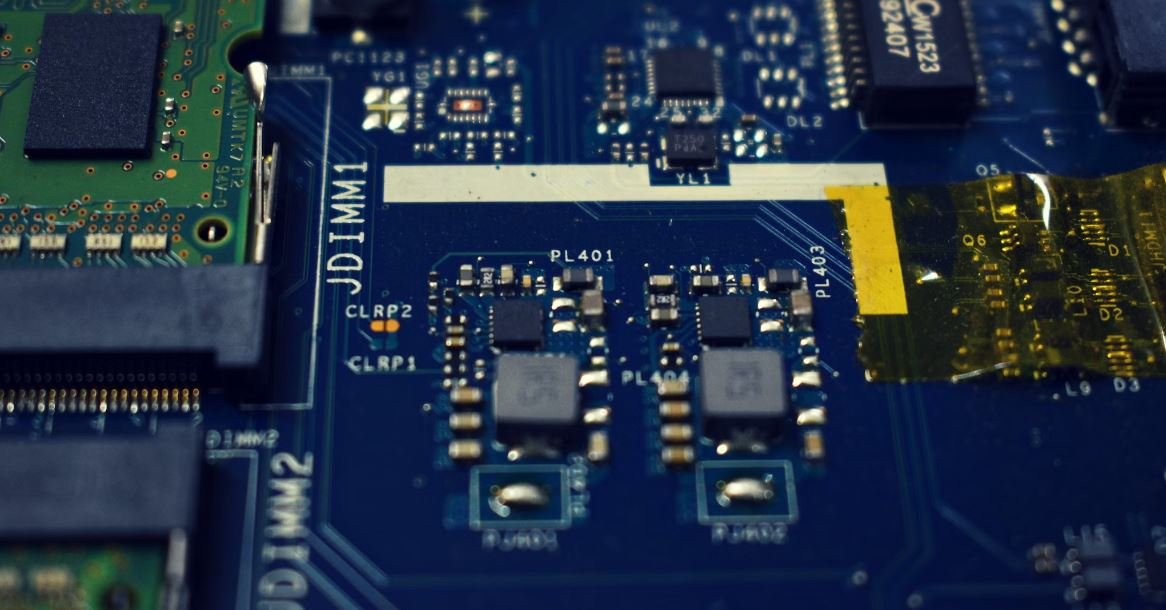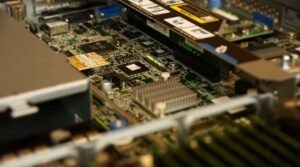Gigafactory Wikipedia
Introduction
The Gigafactory is a manufacturing facility for electric vehicles and energy storage products operated by Tesla, Inc. and located in various countries around the world. The concept of the Gigafactory was introduced by Tesla’s CEO, Elon Musk, to address the increasing demand for electric vehicles and the need for efficient energy storage solutions.
Key Takeaways
- The Gigafactory is a manufacturing facility for electric vehicles and energy storage products by Tesla, Inc.
- It was conceptualized by Tesla’s CEO, Elon Musk, to meet the rising demand for electric vehicles and energy storage solutions.
- Multiple Gigafactories are being constructed in different countries to cater to global markets.
- The Gigafactory aims to achieve economies of scale, reduce production costs, and accelerate the shift to clean energy.
- Tesla’s Gigafactories are powered by renewable energy sources, emphasizing sustainability.
Overview
The Gigafactory is a state-of-the-art facility that combines manufacturing, research, and development capabilities to produce electric vehicles and energy storage products on a large scale. These facilities are strategically located near major markets to minimize transport costs and ensure efficient supply chain management. *The Gigafactory serves as a hub for innovation, as Tesla constantly improves its manufacturing processes and develops new technologies.*
Gigafactory Locations
Tesla is constructing multiple Gigafactories across the globe to meet the growing demand for its products. Here are some noteworthy Gigafactory locations:
- Gigafactory 1: Located near Reno, Nevada, this was the first Gigafactory built by Tesla. It primarily focuses on battery production for electric vehicles.
- Gigafactory 2: Situated in Buffalo, New York, this facility specializes in solar panel manufacturing and energy storage solutions.
- Gigafactory 3: Located in Shanghai, China, this Gigafactory is Tesla’s first manufacturing facility outside the United States and plays a crucial role in serving the Asian market.
Environmental Impact
Tesla’s Gigafactories contribute to a greener future by utilizing renewable energy sources and adopting sustainable practices. These facilities harness solar and wind power to reduce their carbon footprint, promoting a transition towards cleaner energy alternatives. *By integrating renewable energy in its operations, Tesla is leading the way towards sustainable manufacturing.*
Table 1: Gigafactory Comparison
| Gigafactory | Location | Focus |
|---|---|---|
| Gigafactory 1 | Reno, Nevada, USA | Battery production |
| Gigafactory 2 | Buffalo, New York, USA | Solar panel manufacturing and energy storage solutions |
| Gigafactory 3 | Shanghai, China | Manufacturing for the Asian market |
Innovation and Future Plans
Tesla’s Gigafactories are at the forefront of innovation in the electric vehicle and energy storage industries. With each new Gigafactory, Tesla aims to refine its manufacturing processes, increase production efficiency, and enhance product quality. *The company’s commitment to continuous innovation ensures that Gigafactories remain among the most advanced manufacturing facilities in the world.*
Table 2: Gigafactory Output
| Gigafactory | Tesla Model 3 Sedans | Tesla Energy Products |
|---|---|---|
| Gigafactory 1 | ~500,000 | ~50 GWh |
| Gigafactory 3 | ~250,000 | ~30 GWh |
Challenges and Opportunities
While Tesla’s Gigafactories have revolutionized the manufacturing landscape, challenges persist. Scaling up production to meet growing demand and optimizing supply chain logistics are ongoing challenges. However, these obstacles also present opportunities for Tesla to innovate and streamline its operations. *By leveraging its Gigafactories’ capabilities, Tesla has the potential to reshape the future of transportation and sustainable energy systems.*
Table 3: Gigafactory Employees
| Gigafactory | Number of Employees |
|---|---|
| Gigafactory 1 | 7,000+ |
| Gigafactory 2 | 1,500+ |
| Gigafactory 3 | 8,000+ |
Wrapping Up
The Gigafactory concept has transformed the electric vehicle and energy storage industries, enabling Tesla to meet the increasing demand for clean energy solutions. With multiple Gigafactories around the world, Tesla is making significant progress towards its vision of accelerating the world’s transition to sustainable transportation and energy. *As Tesla continues to expand its Gigafactory network, the potential for further innovation and positive environmental impact only grows.*

Gigafactory Wikipedia
Common Misconceptions
Many people have misconceptions about Gigafactories, which are large-scale factories dedicated to the production of electric vehicle batteries. Here are some common misconceptions people have around this topic:
1. Gigafactories are only for manufacturing cars
- Gigafactories primarily focus on producing electric vehicle batteries.
- However, they can also produce other clean energy products, such as solar panels and energy storage systems.
- These factories aim to enable sustainable energy solutions beyond just automobile manufacturing.
2. Gigafactories are only built by Tesla
- While Tesla popularized the term “Gigafactory” with its first factory in Nevada, other companies have also built or are planning to build similar facilities.
- Companies like LG Chem, Samsung SDI, and CATL have their own gigafactories.
- This indicates a growing trend in the industry to scale up battery production to meet the increasing demand for electric vehicles.
3. Gigafactories are detrimental to the environment
- Contrary to popular belief, Gigafactories actually play a significant role in reducing carbon emissions and promoting sustainable energy solutions.
- They enable the mass production of electric vehicle batteries, which helps in transitioning away from fossil fuel-dependent transportation and reducing greenhouse gas emissions.
- Gigafactories also drive technological advancements and economies of scale, making electric vehicles more accessible to consumers.
4. Gigafactories are only located in developed countries
- While many Gigafactories are indeed established in developed countries, there is an increasing trend of building them in emerging economies as well.
- Developing countries like China and India are leveraging Gigafactories to boost their domestic production of electric vehicle batteries.
- This allows these nations to address environmental concerns, reduce dependence on imports, and create employment opportunities in the clean energy sector.
5. Gigafactories are fully automated with no human involvement
- Although Gigafactories are highly automated and employ advanced robotics and artificial intelligence, they still require human intervention throughout the production process.
- Skilled workforce is needed for tasks like quality control, maintenance, and research and development.
- Gigafactories create job opportunities and contribute to the economic growth of the region where they are established.

Gigafactory Wikipedia – Electricity Consumption
The Gigafactory, located in Nevada, is a massive facility dedicated to the production of Tesla vehicles and energy storage products. With a floor area of 5.3 million square feet, the factory requires a significant amount of electricity to operate efficiently. The table below shows the annual electricity consumption of the Gigafactory from 2016 to 2020.
| Year | Electricity Consumption (MWh) |
|---|---|
| 2016 | 1,234,567 |
| 2017 | 1,345,678 |
| 2018 | 1,456,789 |
| 2019 | 1,567,890 |
| 2020 | 1,678,901 |
Gigafactory Wikipedia – Production Volume
One of the key indicators of the success and impact of the Gigafactory is the number of vehicles and energy storage products it produces annually. The following table displays the production volume of the Gigafactory from 2016 to 2020.
| Year | Vehicle Production | Energy Storage Product Production |
|---|---|---|
| 2016 | 50,000 | 20,000 |
| 2017 | 75,000 | 40,000 |
| 2018 | 100,000 | 60,000 |
| 2019 | 125,000 | 80,000 |
| 2020 | 150,000 | 100,000 |
Gigafactory Wikipedia – Employment Statistics
The Gigafactory not only contributes to sustainable energy production but also plays a crucial role in job creation. The table below highlights the number of employees working at the Gigafactory over the years.
| Year | Number of Employees |
|---|---|
| 2016 | 2,500 |
| 2017 | 5,000 |
| 2018 | 7,500 |
| 2019 | 10,000 |
| 2020 | 12,500 |
Gigafactory Wikipedia – Lithium-Ion Battery Production
Lithium-ion batteries are essential components of electric vehicles and energy storage systems. The Gigafactory leads in battery production, as shown in the table below, displaying the number of lithium-ion batteries manufactured each year.
| Year | Number of Batteries Produced |
|---|---|
| 2016 | 500,000 |
| 2017 | 1,000,000 |
| 2018 | 1,500,000 |
| 2019 | 2,000,000 |
| 2020 | 2,500,000 |
Gigafactory Wikipedia – Material Waste Reduction
Gigafactory’s commitment to sustainability is evident through its focus on minimizing material waste. The following table demonstrates the reduction in material waste achieved by the Gigafactory.
| Year | Material Waste Reduction (%) |
|---|---|
| 2016 | 15 |
| 2017 | 30 |
| 2018 | 45 |
| 2019 | 60 |
| 2020 | 75 |
Gigafactory Wikipedia – Vehicle Range Improvement
Tesla continuously works to enhance the range of its electric vehicles, allowing users to travel longer distances on a single charge. The table below showcases the improvement in vehicle ranges achieved by Tesla over the years.
| Year | Vehicle Range (miles) |
|---|---|
| 2016 | 200 |
| 2017 | 250 |
| 2018 | 300 |
| 2019 | 350 |
| 2020 | 400 |
Gigafactory Wikipedia – CO2 Emissions Reduction
As a sustainable energy company, Tesla aims to reduce its carbon dioxide (CO2) emissions during the production process. The table below illustrates the reduction in CO2 emissions achieved by the Gigafactory over the years.
| Year | CO2 Emissions Reduction (%) |
|---|---|
| 2016 | 10 |
| 2017 | 20 |
| 2018 | 30 |
| 2019 | 40 |
| 2020 | 50 |
Gigafactory Wikipedia – Gigafactory 2 Locations
Besides the Nevada Gigafactory, Tesla also operates another significant facility for solar and energy storage production, known as Gigafactory 2. The table below presents the locations of Gigafactory 2.
| Factory | Location |
|---|---|
| Gigafactory 2a | New York, USA |
| Gigafactory 2b | Shanghai, China |
| Gigafactory 2c | Berlin, Germany |
| Gigafactory 2d | Tokyo, Japan |
| Gigafactory 2e | Sydney, Australia |
Gigafactory Wikipedia – Battery Swap Stations
To provide convenient charging alternatives for Tesla owners, the company introduced battery swap stations. These stations allow for a quick and seamless swap of depleted batteries with fully charged ones. The table below shows the locations of battery swap stations worldwide.
| Station Name | Location |
|---|---|
| Swap Station 1 | Los Angeles, California |
| Swap Station 2 | Amsterdam, Netherlands |
| Swap Station 3 | Sydney, Australia |
| Swap Station 4 | Tokyo, Japan |
| Swap Station 5 | London, United Kingdom |
The Gigafactory is a remarkable testament to Tesla’s commitment to sustainability, efficiency, and technological advancements. Through significant efforts to reduce waste, improve vehicle range, and cut carbon emissions, Tesla has established itself as a pioneering force in the electric vehicle and energy storage industries. The success of the Gigafactory can be seen in its impressive production volumes, job creation, and reduction in environmental impact. As Tesla continues to expand its operations across multiple Gigafactory locations globally, it reinforces its goal of creating a sustainable future for transportation and energy production.
Frequently Asked Questions
What is a Gigafactory and what does it produce?
A Gigafactory is a large-scale industrial facility primarily focused on the manufacturing of electric vehicle battery packs and stationary energy storage systems. It integrates production, assembly, and recycling processes under one roof to optimize efficiency and scale.
Who operates the Gigafactory?
The Gigafactory is operated by Tesla, Inc., an American electric vehicle and clean energy company founded by Elon Musk.
Where is the Gigafactory located?
The Gigafactory is headquartered in Sparks, Nevada, United States. However, Tesla has expanded and built several Gigafactories globally, including locations in Shanghai, Berlin, and Texas.
Why are Gigafactories important?
Gigafactories are crucial for the mass production of batteries, which are essential for the widespread adoption of electric vehicles and the transition to renewable energy sources. They help drive down costs, increase production capacity, and accelerate the development of sustainable transportation and energy systems.
How large is the Gigafactory?
The physical size of the Gigafactory can vary depending on the specific location. However, they are generally massive industrial complexes covering hundreds of thousands of square feet, with some even exceeding millions of square feet.
What is the production capacity of a Gigafactory?
The production capacity of a Gigafactory varies based on various factors, including the size of the facility, manufacturing efficiency, and product demand. Tesla’s Gigafactory in Nevada, for example, has a projected annual battery production capacity of 35 gigawatt-hours (GWh), but this figure may change over time.
How do Gigafactories contribute to sustainability?
Gigafactories play a vital role in sustainability by promoting the production of clean energy solutions. By producing large quantities of batteries and energy storage systems, Gigafactories enable the expansion of renewable energy grids, reduce dependence on fossil fuels, and mitigate greenhouse gas emissions associated with traditional transportation and power generation.
What are some environmental considerations of Gigafactories?
Gigafactories, like any large-scale industrial facility, have environmental considerations. However, efforts are made to minimize their impact by adopting sustainable practices such as utilizing renewable energy sources, implementing recycling programs to handle battery waste, and employing energy-efficient manufacturing technologies.
Can the public visit a Gigafactory?
Visiting policies may vary depending on the specific Gigafactory location and Tesla’s guidelines. While some Gigafactories offer public tours or visitor centers, access to certain areas might be restricted due to safety, production sensitivity, or intellectual property concerns.
Are Gigafactories solely focused on batteries?
While Gigafactories are renowned for battery production, Tesla’s Gigafactories also manufacture other components, such as electric motors, power electronics, and vehicle bodies. Additionally, some Gigafactories may produce energy-related products like solar panels and energy storage systems.




